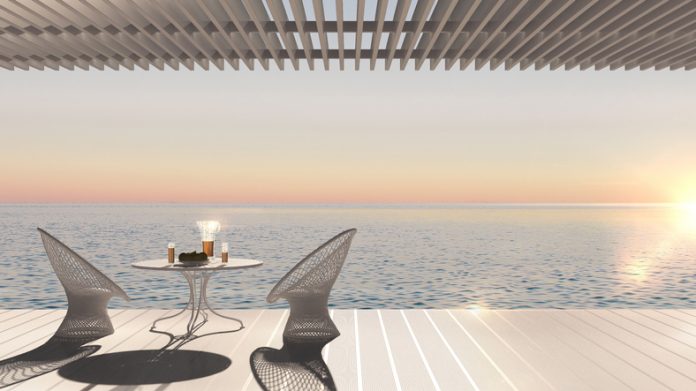
Keith Simmel, principal of the design firm Cooper Carry, understands the strong ties between architecture, landscape, urban planning, and sustainability. He talked to LODGING about how those concepts are applied to accommodate a new mandate—maximizing the use of space, especially outdoor space, to promote social distancing during the worldwide pandemic.
Simmel says one of his company’s longstanding core design philosophies—i.e., connecting outdoor space with the rest of the hotel in ways that enable guests and services to move conveniently through public spaces—dovetails nicely with current concepts of social distancing. “Owners and operators navigating the concept of social distancing can take advantage of the safety valves built into many of the spaces and properties we design, including dedicated vertical circulation or elevators that can be locked off and used specifically to get to an outdoor space. This gives people a level of comfort that they won’t be crowded in with others moving through the rest of the building, but can go up in various small groups down to one or two to a specific floor,” he describes.
As meeting planners and restaurant owners have learned, keeping people at a distance requires more room, and with scientific support for the higher level of safety of gathering outdoors compared to indoors, many are finding ways to expand the space they have, spilling out onto sidewalks and streets. Simmel says these makeshift measures to provide more outside space are all well and good while scrambling in the moment—especially during the warmer months—but says starting with the right setup is a longer-term solution.
“The outdoor spaces we design are typically located close to back-of-the-house as well as meeting spaces, so guests can be conveniently served by the kitchen and staff without walking through and near other spaces where they might feel uncomfortable,” he says, adding that outdoor space can be transformed further to provide the right amount of social distancing using terraces and portable bars. He cites as an example, a newly opened hotel in El Paso, Texas. “Its rooftop bar is designed as three separate rooms, so people move to the space where they are most comfortable, which creates some sort of inherent separation anyway as opposed to the old days where it was the loud bumping music and the shoulder to shoulder bar scene.”
“While many of these changes will stick, the fact is, people come to these buildings and spaces to be with others… as we move forward and hopefully rebound from what’s going on right now, we will learn some lessons but we will also learn how to be close but not on top of each other.”
For new designs and renovations, Simmel says, his firm’s focus is not on operations but reconfiguration—mainly to create social distance between tables—including using the lobby to spread out the restaurant or bar—something that was already being done to promote that sense of arrival and community that had become so popular.
Simmel says projects now under construction are incorporating many of his firm’s social distance–friendly concepts, which perhaps foreshadowed the need but in fact predated the pandemic. “I don’t know if that says anything about the way we designed them or the situation that we’re in, but we haven’t really been asked to make a whole lot of changes to things that are under construction,” he comments. These features include: public spaces—no longer called the lobby—where the furniture is spread out to have a little bit more of a residential living room feel; limited-contact destination elevators, where the keypad is pressed just once, and there are no up and down buttons; and dedicated elevators that go directly to meeting spaces or elevated public spaces. “We certainly didn’t predict this new need to facilitate social distance for public health reasons. We were just considering the positive impact of efficiencies such as these on the guest experience. It just so happens that some of the needs for separation that the coronavirus requires go hand in hand with those things that we were already incorporating,” he remarks.
As for whether the changes made more directly in response to the pandemic will endure, Simmel is philosophical—mentioning the constancy of change, as well as human nature and its intersection with the hospitality industry. He calls hotels and hospitality-related projects “social condensers,” explaining, “The new evolution is for people to be in smaller groups, to be social, but not necessarily overwhelmed. So, while many of these changes will stick, the fact is, people come to these buildings and spaces to be with others, to be with family and friends. I think as we move forward and hopefully rebound from what’s going on right now, we will learn some lessons but we will also learn how to be close but not on top of each other.”
Given his focus on design, not masks and gloves and disinfection, Simmel says creating spaces that are safer because they allow for better separation sets what he does apart from what hotel owners and operators are scrambling to do in the moment. “These are trying times and it’s important to do what we can to make guests feel safe and comfortable in the hotel space. While it’s hard to gauge the level of comfort people moving through a space like a hotel want, I think it matters to those who care that you made an effort to address their safety concerns through design as well as through signage, Plexiglas, and spray bottles.”











